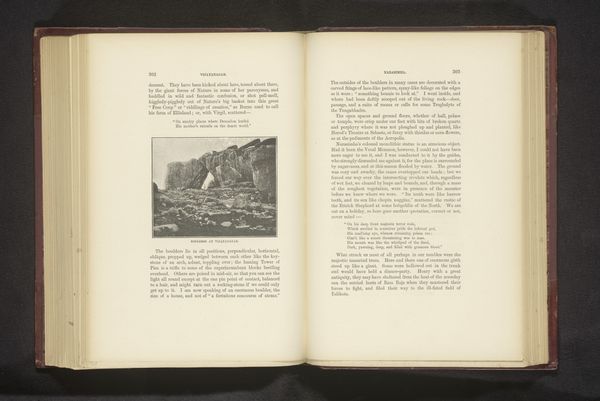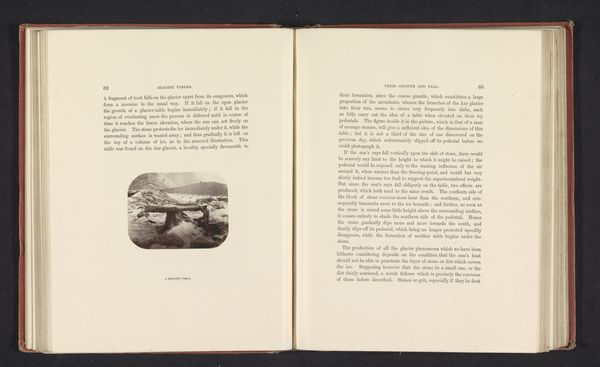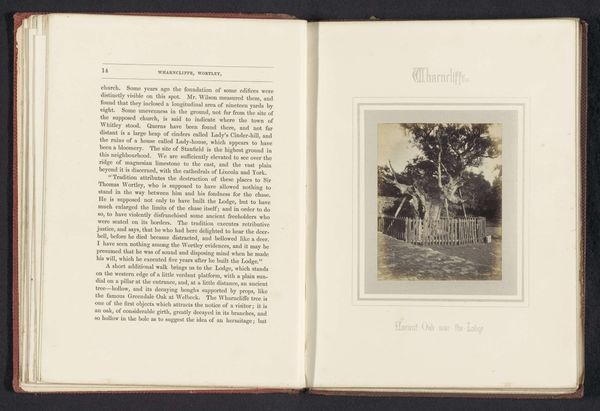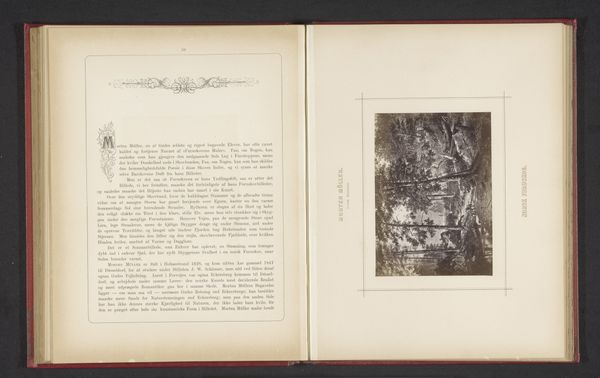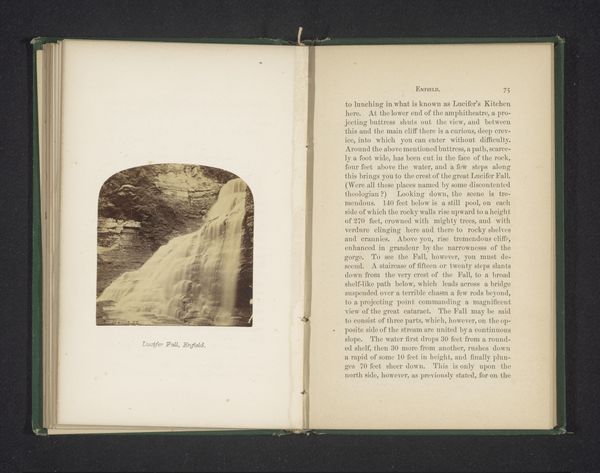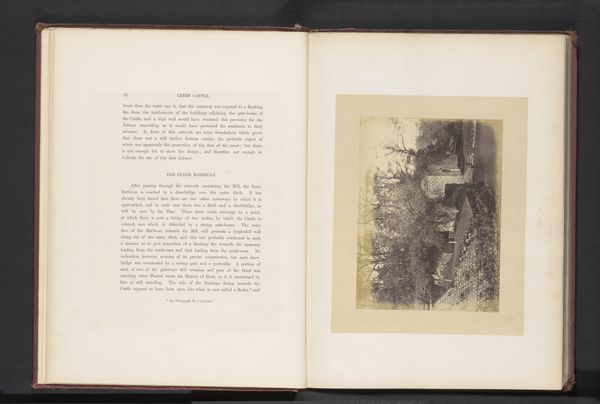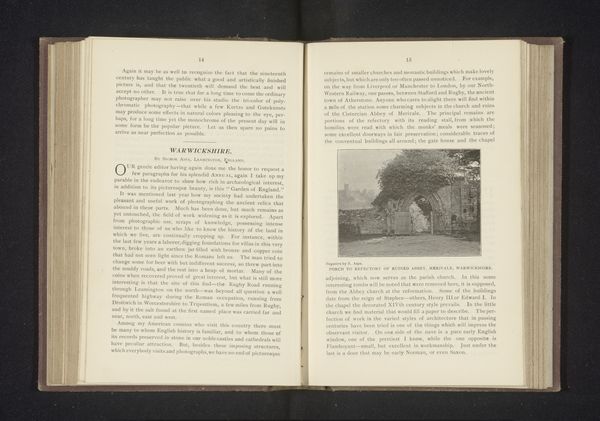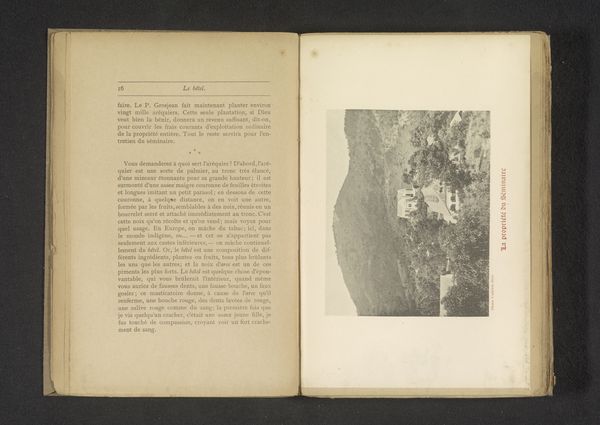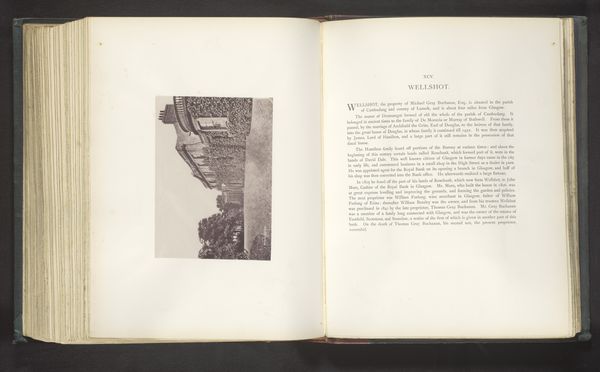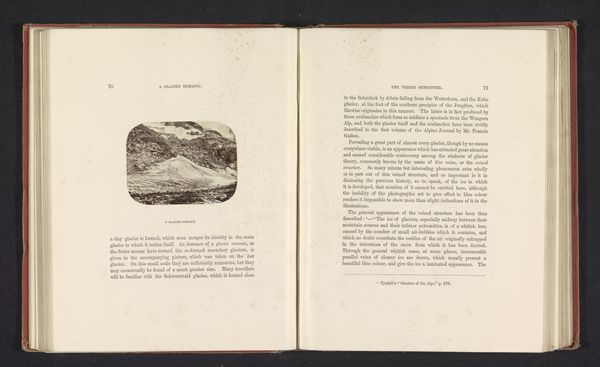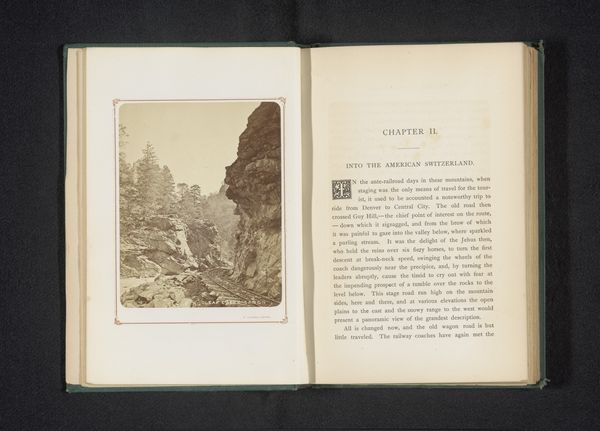
print, photography
# print
#
landscape
#
photography
#
watercolour illustration
Dimensions: height 95 mm, width 80 mm
Copyright: Rijks Museum: Open Domain
Curator: Here we have "Lover's Leap," a photograph predating 1864, by Theophilus Smith. It’s included in an open book, laid flat, the photograph mounted on the right-hand page. The left has old-fashioned text in tight justification, but it's the moody tones of that print on the right that draws my eye, even now. Editor: It looks like a picturesque scene of Wharncliffe. It reminds me of something I’d see in a Victorian novel. I'm interested in how Smith framed nature. What story is Smith hoping to convey? Curator: Precisely! "Picturesque" is a key term here, suggesting the aesthetic lens through which Victorians viewed the natural world. Smith isn't just documenting a landscape; he's composing a scene that evokes a particular set of emotions. Do you notice how the rocks are positioned, almost as if stage props? How does that affect your interpretation? Editor: It definitely feels arranged. As if there’s a deeper meaning implied in this rugged outlook... but the placement also feels natural somehow? Or perhaps staged in nature, a meeting of art and landscape. Is that what he was looking for, this balance? Curator: It makes me think of Romanticism. These landscapes are powerful. We get a view into something greater than the self, dwarfed by this promontory of nature. Also, given the title "Lover's Leap," there’s an implied narrative, a suggestion of human drama playing out against this grand backdrop. Does that prompt further thought for you? Editor: It does! I feel a sense of melancholy… like maybe a forbidden romance played out against this vista. I find myself curious what compelled Smith to highlight Wharncliffe and, more pointedly, the dramatic 'Lover's Leap'. Thank you. Curator: The power of art. Thank you for guiding my view on Theophilus Smith’s picture as well! It never fails to astonish me!
Comments
No comments
Be the first to comment and join the conversation on the ultimate creative platform.
